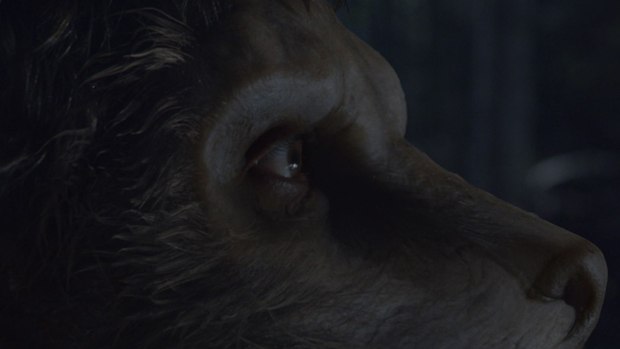Supervisor Mario Rachiele sinks his teeth into Syfy's remake of the popular BBC monster mash.
In Being Human, Syfy's Americanization of the UK horror series (airing Mondays 9/8c), we still have a vampire (Aidan, played by Sam Witwer), werewolf Josh, played by Sam Huntington) and ghost (Sally, played by Meaghan Rath) living together. However, it's Boston instead of Bristol (though shot in Montreal), and the tone is less terrifying, among other things.
Not surprisingly, the centerpiece of the VFX (done mostly by Montreal-based Oblique Effects), is Josh's CG wolf. The rest of the show's vfx revolving around the vampire and ghost and various victims serve a more supporting role and are far less involving.
But the full-on wolf won't be revealed until the eighth episode, "Children Shouldn't Play with Undead Things," which airs March 7.
Meanwhile, we've witnessed Josh's transformation several times, which is more realistic-looking and seemingly more painful for the character than his British counterpart. "We've intentionally not watched the original series because we don't want to be influenced by what they've done," admits Mario Rachiele, the overall visual effects supervisor. "We wanted to leave the artists completely free. Of course, they looked at Twilight and all the other shows where they have werewolves. It's not a werewolf that you expect, I must say. He has very human-like shoulders and upper arms and thighs. We tried to keep some humanity in the wolf. We have kept the actor's actual eyes, which we reproduced in the final wolf. We were trying to keep human parts, but, still, he's supposed to be a bit scary and out of the ordinary. He's going to be a surprise."
The design process began with about a dozen artists trying out different ideas. Of course, there are lots of considerations about depicting various body parts. After some back and forth, the artists took a second pass and the third time around they modify, mixing and matching different aspects more like a Frankenstein monster. In terms of software, they use a bit of everything, including Softimage and Maya. "The example I always give is when we have to motion track a shot, some motion tracking software will automatically track a shot while others won't," Rachiele adds. "You just change a shot and that software will work better for that kind of shot. Again, for animating the wolf, the principal animator uses Softimage because he's used to it.
"The audience has seen all the other shows with werewolves, and we have to be somewhat different. We are working in TV, not feature film, but we want to make an impact. Having said that, everyone has an opinion of how he should look, how he should act, how he should move. It's a big team. We're delivering all the wolf shots and we're all satisfied -- so far, so good.
"The fun part for me is shooting the scenes with the wolf and trying to make everybody else in the scene see what I see in my head: where the wolf is going to be, what he is doing and where the camera is and what motion tracking will have to do, the lighting of the wolf and where the shadows will be cast. It's very hard for everybody to imagine that wolf when we shoot the scene, so it's my job to make sure that everybody sees it."
Meanwhile, the vampire vfx are straightforward: basically eyes turning black when they get upset or the growing of their teeth. When the vampires die, they turn to dust. That will be in the final episode, so they are just starting those vfx. It's a combination of particles and well-planned rotoscoping and some layering in which the outside layer will disintegrate while the inside layer will be dust. But some of them will be a bit more interesting in what we call the "raisin effect." Before they disintegrate, their skin will instantly dry up.
The ghost appears and disappears with a flickering in or out. "So we try to make the disappearance effect relate to her mental state at that moment," Rachiele continues. "If she just had a fight with somebody and she disappears, she won't disappear the same way if she's running from something. Each disappearance is different but the effect is a standard particle generation. But, again, it's a very subdued effect. Ghosts are also supposed to relive their deaths, so in one episode, a ghost died from drowning, and once a day he drowns again. How do you visualize somebody drowning in a house? Again, we did some concepts and we ended up shooting the actor in a water tank over a greenscreen and we basically designed a way for him to drown using CG water in two or three places in the show.
"Most of the big effects will be in the later episodes," Rachiele suggests. "But there's a nice morph in the first episode of Josh when he becomes a wolf, but you don't see the end of his transformation. We zoom in on his face where his nose is very obvious and hair grows into a near werewolf. We cut just before the final stage.
"Another interesting shot is where he's in the woods on all fours and we see his rear and human legs becoming wolf-like. But it's in the middle of the transformation. We built a complete snout in 3D and we motion tracked the actor's face and added our CG on it. Episode 10 will have lots of animation with a wolf fight."
Bill Desowitz is senior editor of AWN & VFXWorld.











